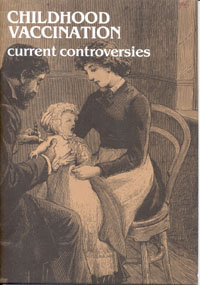Unlocking the Value of Combination Therapies

The historical roots of immunisation can probably be traced back to ancient Greek and Chinese civilisations and the observation that adults who survived an attack of smallpox did not usually contract the disease a second time. Yet the 'modern era' is perhaps generally…
The historical roots of immunisation can probably be traced back to ancient Greek and Chinese civilisations and the observation that adults who survived an attack of smallpox did not usually contract the disease a second time. Yet the 'modern era' is perhaps generally regarded as having commenced at the end of the eighteenth century with Jenner's demonstration that smallpox could be prevented by first 'vaccinating' individuals with cowpox. Eighty years later, the work of Pasteur in France and Koch in Germany established the science of bacteriology, thus paving the way for the development of vaccines. The latter process has continued into the twentieth century and has been responsible for a number of remarkable successes in preventive medicine.
A dramatic example of the benefits generated by vaccination is evident in the context of diphtheria. During the 1930s an average of 61,000 cases of the disease were experienced each year in England and Wales, resulting in the deaths of approximately 3,000 individuals (Cockburn 1978). Throughout the same decade a safe and highly efficient immunising agent had in fact been available but it was not until 1942 that a national campaign was launched with the goal of protecting all diphtheria susceptible persons under 15 years of age.1 The initiative had a rapid impact: within 10 years, the annual number of cases and fatalities had fallen to 376 and 23 respectively and by 1962 to 16 and 2. The most up-to-date information available indicates that during the first three years and nine months of the 1980s there were 15 notified cases of diphtheria and only one death.
Poliomyelitis provides further evidence of the potential benefits of an effective programme of immunisation. During the quinquennium preceding the introduction of a mass immunisation campaign in 1956, there were on average 2,827 notified cases of poliomyelitis and 326 deaths from the disease each year in England and Wales (Cockburn 1978). Extensive take-up of the vaccine – by September 1963, 19 million persons had received two doses – increasingly inhibited survival of the virus in the community, resulting in a 100 fold decrease in notifications between 1957 and 1963 (Griffith 1979). Subsequently a policy of routine immunisation for infants has been pursued and in the 1980s to date (that is to September 1983) only 10 cases of acute poliomyelitis have been notified to the authorities.
However, two other 'traditional' childhood infections – measles and whooping cough — remain sources of concern because of the persistently high levels of ill-health with which they are associated. In 1982, nearly 66,000 cases of whooping cough and 94,000 cases of measles were notified to the health authorities in England and Wales. Effective vaccines are available for both of these diseases so that a substantial proportion of this morbidity may be regarded as unnecessary. Currently, however, only one child in two is protected against the illnesses.
Inadequate vaccination levels have also been put forward as one of the factors underlying the failure substantially to reduce the number of cases of congenital rubella syndrome. The upsurge in the incidence of rubella in 1978-79 led to at least 120 babies being born with defects because their mothers contracted the disease in the early stages of pregnancy. In addition, 1,405 pregnancies were legally terminated for rubella associated reasons (DHSS 1983). Against this background Smith (1983) has commented that 'immunisation of children against infectious diseases is one of the most obvious failures of the NHS'.
This paper investigates the purported deficiencies of vaccination policies in Britain as they relate to measles, rubella and whooping cough. The analyses it offers make clear that the scope for debate is extensive and prohibitive of straightforward solutions. Nevertheless, the paper draws a number of general conclusions which might point the way to future reductions in the volume of morbidity currently generated by these three diseases.
Childhood Vaccination: Current Controversies
Wells, N.
(1984) Childhood Vaccination: Current Controversies. OHE Series on Health. Available from https://www.ohe.org/publications/childhood-vaccination-current-controversies/
